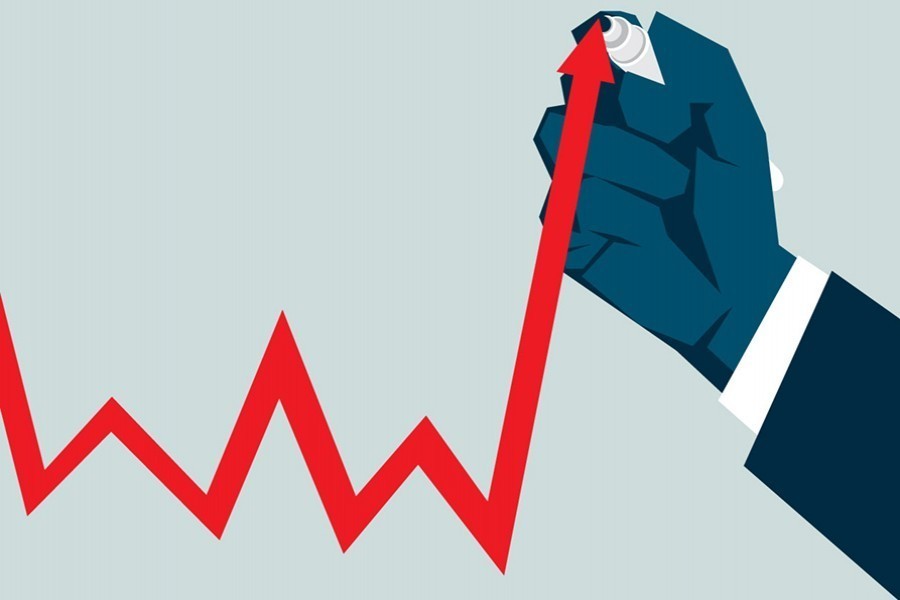Following a meeting of the Executive Committee of the National Economic Council (ECNEC), the planning minister made public a provisional figure on the economy's growth rate for the FY2021-22. Based on the data provided by the Bangladesh Bureau of Statistics (BBS), the Gross Domestic Product (GDP) estimated at 7.25 per cent looks optimistic. It marks an increase by 0.31 percentage point compared to FY202-21's GDP growth at 6.94 per cent. Even the stated GDP growth figure for the last fiscal was indeed impressive since the economy was then still fighting the pandemic at its worst during the previous fiscal (FY2019-20) when the growth rate went down to as low as 3.45 per cent.
Now that the entire economic output data for the current fiscal (FY22) are yet to be in hand, the GDP growth calculation has obviously been made on the basis of the economy's performance over the past three quarters. As such, the economic growth rate provided by the ECNEC is indicative rather than confirmative. Even so, it all reflects the resilience of the economy against all odds. But a word of caution. The economy is still dogged by the inflationary pressure, depreciating taka against US dollar, widening current account deficit and the falling foreign exchange reserve. On the other hand, the developments on the international front such as the instabilities in the global energy, food and commodity markets, which have been further unsettled by the continuing Ukraine war, are impacting the country's economy negatively.
So, the elements of uncertainty may not disappear during the remaining three months of the outgoing fiscal year, even as the planning minister would like to see a more promising growth figures for the fourth quarter of the current fiscal year. One would at this point also do well to take note of the country's economic growth forecasts for the current fiscal year made by our development partners including the World Bank (WB) and the International Monetary Fund (IMF) at 6.4 per cent, while that made by the Asian Development Bank (ADB) at 6.9 per cent. With these more or less cautious prognostications made by our development partners in mind, the policy planners of the economy while being optimistic would advisably take into account all these possibilities as they chart out the economy's growth path for the upcoming fiscal year.
On this score, it would also be worthwhile to revisit the GDP-focused growth estimates for the economy. According to the BBS data, the country's GDP for the current fiscal year is estimated at US$465 billion. The per capita Gross National Income (GNI) based on that figure comes to US$2824 in the current fiscal which is an increase of US$233 over what it was in the previous fiscal. Converted into taka, the per capita income increase would be over taka 20,000 in local currency. One wonders, how far the figure fits in with the realities at hand, particularly, when it comes to the day-to-day lives of the common people.
There is, however, no question that the GDP reflects the cumulative growth trends in all the sectors of the economy including industry, service and agriculture. But so far as the disparities in distribution of the national income among the population is concerned, the per capita GNI hardly comes up with the much-sought-after answer. Hopefully, the future estimates for the economy's growth trend would also include this distributive aspect of the national income.


